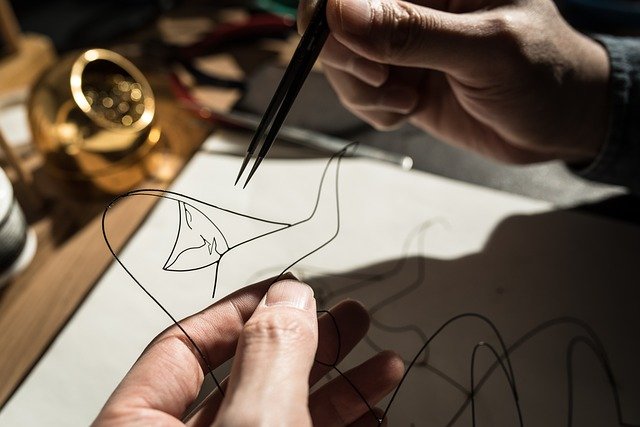Portable adjustment tools: compact options for precise on-the-go tweaks
Portable adjustment tools help keep wristwear like cuffs and beaded pieces functioning and attractive when you’re away from a full bench. This short overview highlights compact gadgets and simple techniques for quick bead tightening, clasp fixes, sizing tweaks, and surface care, with attention to materials and everyday practicalities.

Small maintenance moments can make the difference between wearing and storing a favorite piece of wristwear. Whether you carry a cuff that needs occasional reshaping, a beaded strand that requires a tightened knot, or a plated chain whose clasp slips, compact tools let you perform precise on-the-go tweaks without specialized equipment. The right combination of mini pliers, micro-screwdrivers, spring bar tools, and polishing cloths can address common needs for metal, leather, and mixed-material accessories, while mindful choices reduce the risk of damage or unwanted surface change.
How do portable tools help wristwear and cuffs?
A slim set of flat-nose and round-nose pliers, often under 4 inches, is a foundation for cuff and wire-wrapped wristwear adjustments. These tools allow modest reshaping of metal cuffs, opening and closing small jump rings, and adjusting wire components without relying on full-sized bench tools. For softer alloys and plated surfaces, use nylon-jaw pliers to avoid marring finishes. Carry a small plastic block or cloth to support the piece while bending a cuff gently, and avoid repetitive force on plated areas because plating can thin with mechanical stress, exposing the base alloy.
Which compact tools suit beads, plating, and alloy work?
For beaded bracelets, a bead reamer and tapered awl in a travel size simplify enlarging holes or adjusting bead placement. Micro-screwdrivers are useful for tiny screw clasps or bead caps. When working on plated or alloy components, keep a soft polishing cloth and a non-abrasive cleaner cloth to remove surface dirt without stripping plating. Be cautious when using metal files on alloy parts; micro-files can remove burrs but also alter plating and patina. Test on an inconspicuous area before applying tools to visible surfaces.
What to carry for leather, clasps, and sizing adjustments?
Leather wristwear benefits from a leather needle, a few spare rivets or a compact rivet setter, and a small bottle of leather conditioner in travel size. For clasps, a spring bar tool (often used for watch straps) and a tiny screwdriver set address common sizing and clasp repairs. Keep a selection of spare clasps or small jump rings in a labeled pouch for quick replacements. For sizing tweaks, adjustable link pliers or a micro-chain re-linking tool enable removing or adding a link on chain bracelets, but careful measurement is essential to preserve symmetry and comfort.
How to manage oxidation, patina, and polish on the go?
Oxidation and patina are sometimes desirable; other times they signal corrosion. A gentle polishing cloth can revive shine on many metals without removing intentional patina when used sparingly. For light tarnish on silver or alloy pieces, an anti-tarnish wipe is compact and effective, but avoid aggressive abrasives on plated items. Micro-fiber cloths paired with minimal, pH-neutral polish help maintain finishes; for engraved surfaces, use a soft brush to clean debris from lettering so engraving details remain legible without over-polishing.
Are hypoallergenic materials, engraving, and traceability affected?
When adjusting pieces made from hypoallergenic metals or leather, avoid introducing contaminants that could cause reactions—use clean tools and store them separately from nickel-containing alloys. Engraving lines can be softened by heavy filing or polishing, so opt for delicate actions around personalized text. Traceability—knowing the material origin—helps decide which tools and treatments are appropriate: for example, plated pieces will react differently to solvents than solid alloy or precious metal items. Keep notes or simple tags on pieces in your kit to maintain traceability for future care decisions.
How can repair and sustainability guide your tool choices?
Compact repair kits should prioritize multipurpose, durable tools that reduce waste by extending the life of wristwear. Choose stainless-steel pliers and screwdrivers with replaceable bits, carry biodegradable polishing cloths, and use minimal packaging for spare parts to support sustainability. Learn basic repair techniques—knot retying for beaded strands, cold-join alternatives instead of soldering for mixed materials, and careful clasp replacement—to avoid discarding items. Traceability and repair-friendly design both support sustainable consumption by keeping pieces serviceable and reducing the need for replacements.
Portable adjustment tools are about preparedness and restraint: using the right compact implement for wire, leather, plated surfaces, or beads prevents unnecessary damage while enabling precise on-the-go tweaks. A thoughtful kit includes protective jaw options, tiny files, micro-screwdrivers, a spring bar tool, polishing cloths, spare small parts, and a few material-specific care items. With modest practice and attention to material differences—plating versus solid alloy, hypoallergenic metals, or delicate patina—you can keep wristwear comfortable, functional, and visually intact between professional servicing and more involved repairs.






